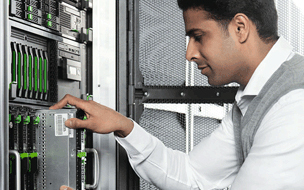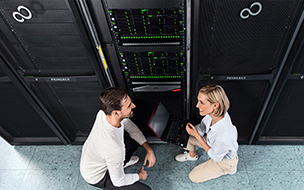The features of RAID technology
Understanding RAID
Damage to the enterprise, caused by disk failure, has become a correspondingly heavier burden as disk capacity use has grown.
Storage system downtime can mean companies fail to take full advantage of business opportunities because of the management overheads of securing important data.
RAID technology not only prevents such data loss and failure but also enhances business performance.
This content covers the topics of RAID technology from its processes to use.
What is RAID?
RAID is an acronym for "Redundant Array of Inexpensive Disks".
When interpreted literally, it means storing information across an array of relatively low cost hard disk drives (HDDs). It is generally considered to be "Technology that combines numbers of such inexpensive HDDs into a single HDD."
RAID is the use of multiple disks to manage HDD data using a range of different techniques. These are typically divided into 6 levels ; RAID 0, RAID 1, RAID 2, RAID 3, RAID 4, RAID 5. They all differ in terms of data deployment and the type of redundancy offered.
Now Fujitsu provides RAID 6 with it's ETERNUS DX and ETERNUS AF. This ensures enhanced reliability through use of double parity.
The technology was initially proposed by a study group of Professor. Patterson at the University of California. When they presented their paper, the "I" in RAID represented "Inexpensive". This was because they were seeking ways to use the inexpensive HDDs that were on the market, in their study, instead of the proprietary and rather exclusive disk devices commonly used at that time to improve disk drive speed and reliability.
But today, as expensive dedicated HDDs have all but disappeared from the market, the "I" in RAID has come to represent "Independent".
It has also become popular to mix and match the various RAID level technologies to provide more specific cost reductions and performance enhancements.
Both software RAID and hardware RAID are available for installation.
Software RAID can be implemented through features that combine multiple disk devices connected directly to a host computer (typically via a SCSI interface) and regard them as a single logical memory device. This feature introduced with the operating systems Windows NT/2000 is commonly used.
With Hardware RAID, a control component, independent of the host CPU implements RAID. The two most popular methods of Hardware RAID are via PCI bus connection to the host computer using a card, or integrated with the disk drive and connected to the host computer via fibre channel or SCSI.
Hardware RAID is by far the most common method in full-fledged server systems, as it places no additional processing burdens on the server.
Let's look at the details of the different RAID technology levels.



